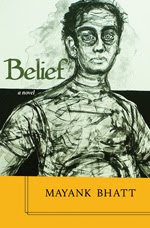Sunday, July 30, 2017
Modi’s India – IV
Hail Hindutva!
A senior journalist told me at Bombay’s Press Club that it helps the BJP to keep the national mood constantly on the boil because such a supercharged atmosphere gives it great electoral dividends. This was true in the past and is more so today. The journalist also said that by keeping alive such issues, the real issues that India faces continue to remain unresolved. Nobody is asking questions about the absence of job creation, or the crises in the agrarian sector. The Modi regime’s game plan is to keep the affluent sections of the Indian population happy and satisfied, and it does this by maintaining a tight leash on inflation and by keeping the stock market indices high.
My peregrinations to four cities during my recent visit reinforced my belief that India will abandon – sooner rather than later – the shibboleth of secularism as easily as it did socialism in the 1980s. The next Modi government will pave the way for a Hindu Rashtra in India. It probably won’t tamper too much with the Indian constitution but it will definitely change the character of India’s nationhood. Will a majority of Indians oppose or support this development? A friend in Toronto had an interesting insight. He believes that the groundswell of support for Modi and for his policies seem to indicate that there was already a large reservoir of latent sympathy for the Hindutva cause amongst a majority of Indians and that Modi’s arrival sparked off a public frenzy that is unlikely to abate anytime soon. It’s hard to argue against this opinion because of what I witnessed in India. However, many people I spoke to don’t share this view and believe that India’s diversity will defeat all attempts to impose a simplistic interpretation of nationalism.
The political pendulum will swing back towards equilibrium eventually. And that eventuality, if it were to ever materialise, is both welcome and worrisome. Welcome because it’ll restore equilibrium in the Indian political space. But worrisome as well because many fear that when the BJP begins to concede ground to others, Battleship Hindutva’s foot soldiers will unleash untrammelled terror on not just the minorities but also on those who defend secular values and oppose Hindutva. Already, these hotheads have done to death Govind Pansare and Narendra Dabholkar (among others) who are opposed to the Hindutva ideology. If the tide turns against the prevailing political structure, it is imminently possible that Hindutva’s opponents will be victimised.
As a person of Indian origin, but no longer an Indian citizen, I’m often questioned by the legion of Modi supporters in the diaspora as well as by my Indian friends what right I have to talk about India in such a partisan manner, and consistently oppose Modi even when he’s doing everything he can to push India forward. I’m always accused of being partisan when I highlight the continuing human rights violations against India’s religious and caste minorities. There are many like me similarly accused and there really is just one answer – I do it because I believe in the idea of India. Another journalist friend, who’s been engaged in this battle of ideas, told me that the idea of India as a pluralistic society is the reality of India. This reality is not an artificial construct; it is inherent in all Indians. India’s first Prime Minister Jawaharlal Nehru strengthened this reality by infusing what MJ Akbar, in his masterly biography of Nehru, describes as the Nehruvian Pancha Sheela (five principles): Secularism, reason, free-thinking, science and progress.
In Idea of India, Sunil Khilnani defines Indianness. “The puzzle of India’s unity and of Indianness raised a variety of contending responses within the nationalist movement that brought India to independence. Nehru’s was only one among these, and it was in no sense typical of nationalism as a whole “Indian nationalism” is a somewhat misleading and cultural ferment and experimentation inaugurated in the late nineteenth century. The various, often oblique, currents that constituted this phase extended well beyond the confines of a political movement such as the Congress, with its high political, bilingual discourse. The possible basis for a common community was argued with ingenuity and imagination in the vernacular languages, especially in the regions like Bengal and Maharashtra that had been exposed longest to the British, where a sense of regional identity only came into being as people tried to define a larger ‘Indian’ community. The belief that Indian nationalism had subsequently to unite and subordinate these regional identities is thus a curious misreading of the relationship between nation and region in India. In fact, a sense of region and nation emerged together, through parallel self-definitions – and this point is essential to any understanding of the distinctive, layered character of Indianness. The content and styles of these diverse explorations of a common community were neither uniform nor consistent, and the picture painted by nationalist historiographers of independent India, of a rising arc of nationalist self-consciousness from the ‘Renaissance’ in nineteenth-century Bengal to a culmination in 1947, is at best sentimental.”
But a lot of unclean water has flown down the Ganga during the last 70 years, and it’s time for a new definition of Indian nationhood that, Modi and his followers would have us believe, is more rooted to India’s culture. Therefore, let’s all rise and Hail Hindutva!
Subscribe to:
Post Comments (Atom)




No comments:
Post a Comment